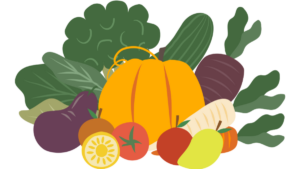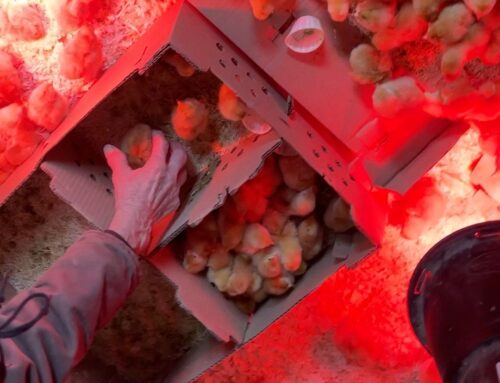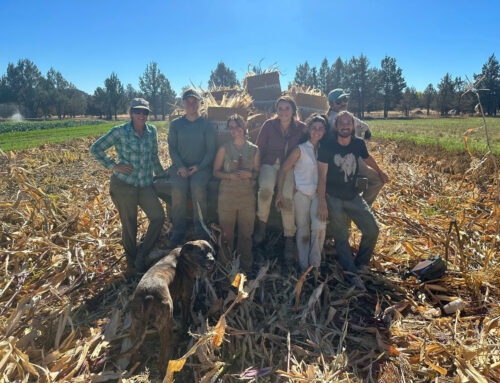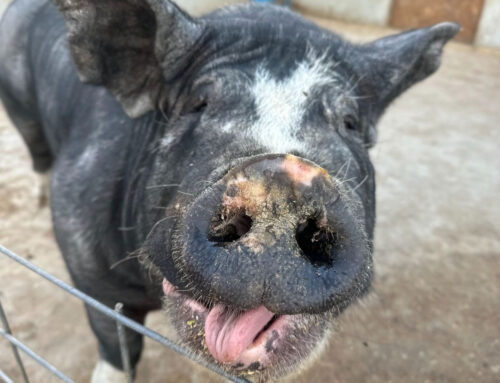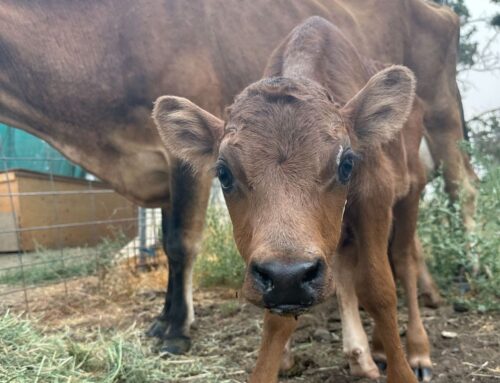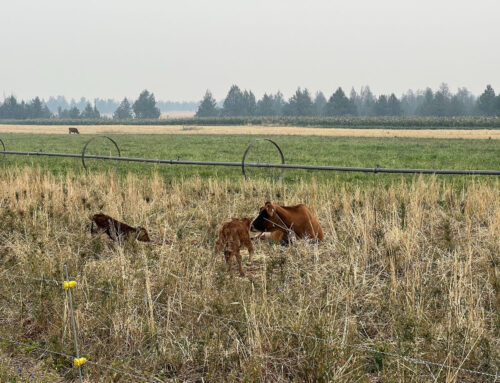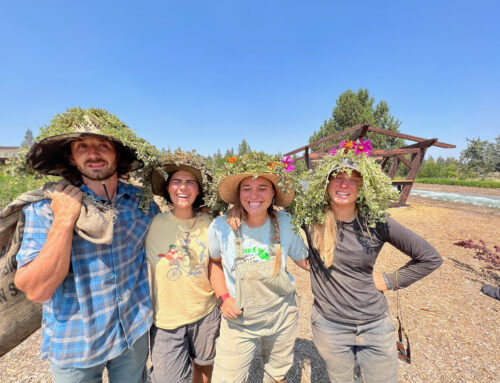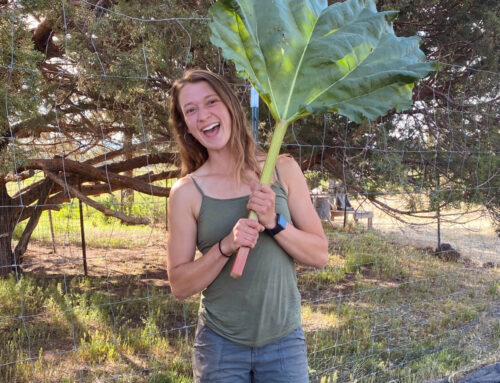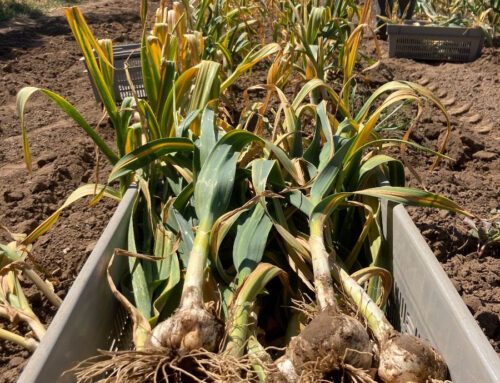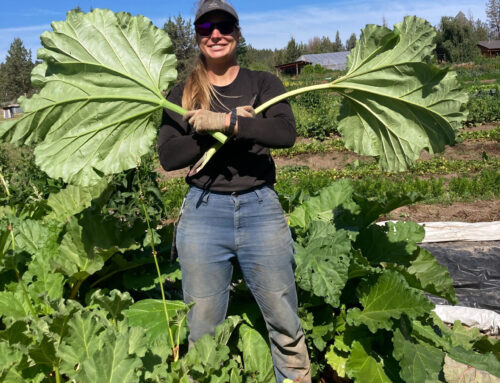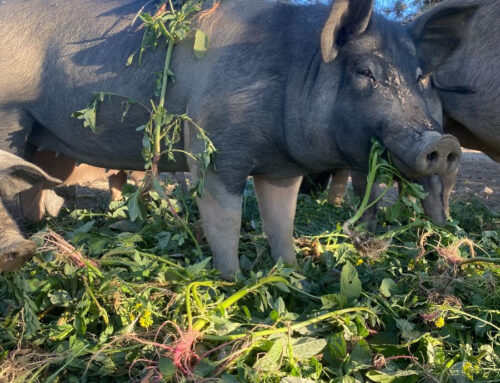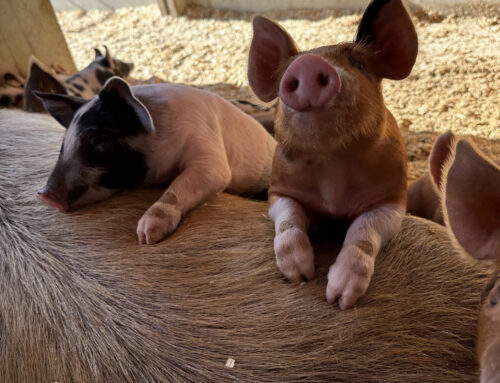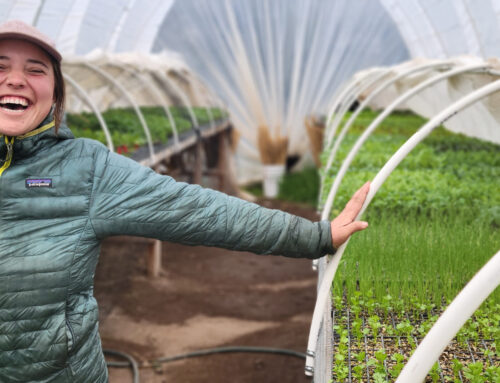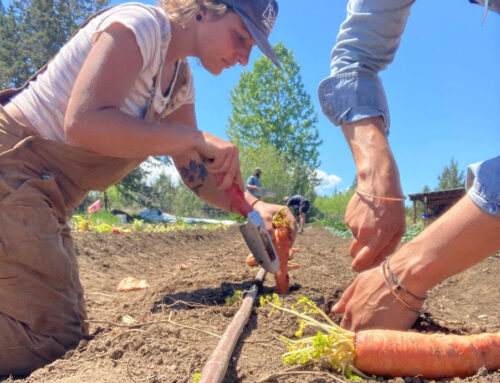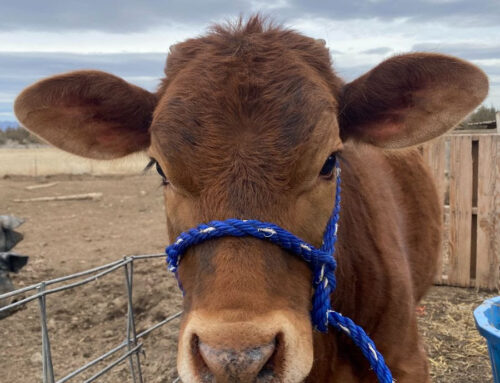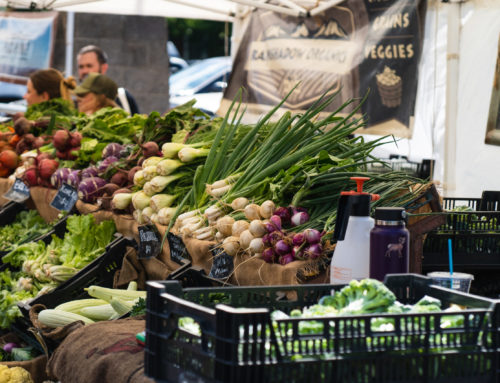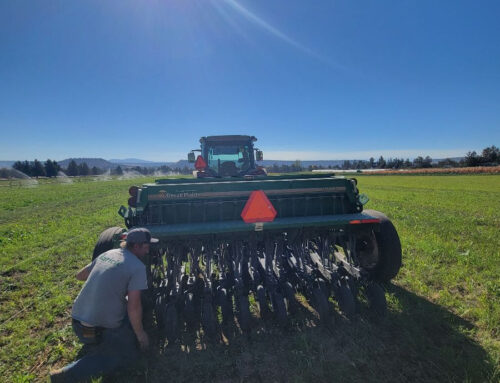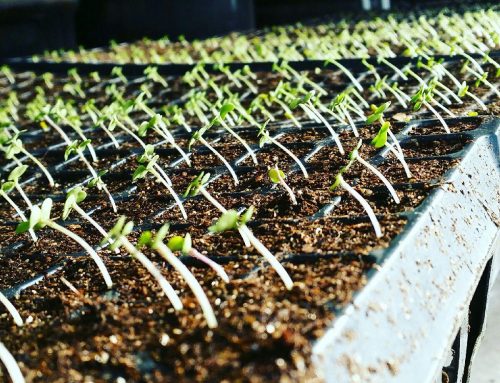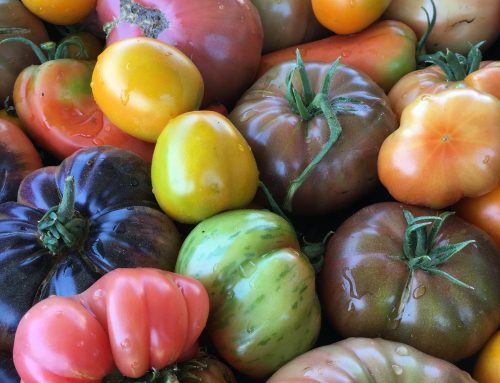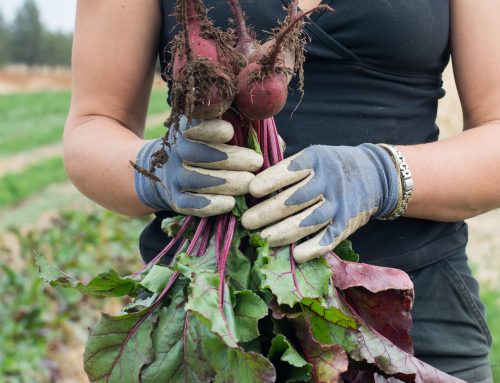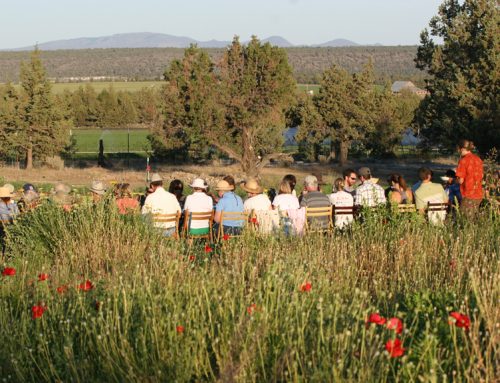News from the Farm:
Oh, wow, only two more CSAs left in our 2023 20-week Summer CSA. This will be the last week that we see our Meat Only CSA members and this will be the last meat pick up for our Meat & Veggie members. That means that next week is our last Vegetable Pick up and the last Bend Farmers Market of 2023. Dang, 20 weeks feels so long and so short all at the same time!
It certainly feels like the season is winding down in that glorious, end of season sort of way. The number of jackets worn in the morning has steadily increased and over the past week we have seen multiple frosty mornings on the farm. Which is great, honestly, nothing can sustain a summer growing season forever. The soil needs to rest. The farmers need to rest.
And our diets–meaning the kind of food that we customarily eat and not the restrictive lose weight sense of the word–have begun to show the telltale signs of switching into winter nourishment. Speaking at least for myself, slow cooked rich meals made in my oven or my pressure cooker have really begun to simmer to the top when I start thinking about feeding myself. Stews, roasts, and roast chickens. Sauces rich in cream or with a cooked down wine base. Potatoes, onions, and winter squash are replacing the cucumber salads and variations of “everything on a lettuce base” that is my normal summer run. I’m not saying I am over crunchy cucumbers or vine ripened tomatoes, just that I am really starting to lean into those rich winter flavors.
And the farm is reflecting this change too. The two frosts last week nipped back the vines on the winter squash plants so we were able to harvest all of them. The frosts also took out a lot of the flowers in the 2-acre and the general colder temps have really slowed down the growth of everything. Which, as mentioned before is great. Harvest takes a little less time so we can concentrate on finishing all the preparations for the winter and harvesting all the storage crops.
We have flipped most of our hoop houses into their Siberian Kale winter splendor. The potatoes, onions, winter squash, diakon radish, and garlic are all tucked into their winter storage homes waiting to nourish us through the cold months ahead. The harvest continues on our carrots and beets and we haven’t yet started harvesting and processing our dried beans and (gasp, are you ready for this) polenta corn.
We grew Flint corn for the first time this summer because it is supposed to be excellent for milling into polenta. This is something a little bit in the future (we have to harvest the corn, dry it, and then figure out how to mill it appropriately), but we are extremely hopeful that polenta will be part of the delicious meals that CSA members can nourish themselves with over the winter.
We have all really enjoyed riding the wave of the growing season with you this year and are excited for the last week with you all next week! Thank you all for your continued commitment to local agriculture, ecosystems, and economies. From our farm to your home, we appreciate you and our gratitude, like zucchini in July, overflows.
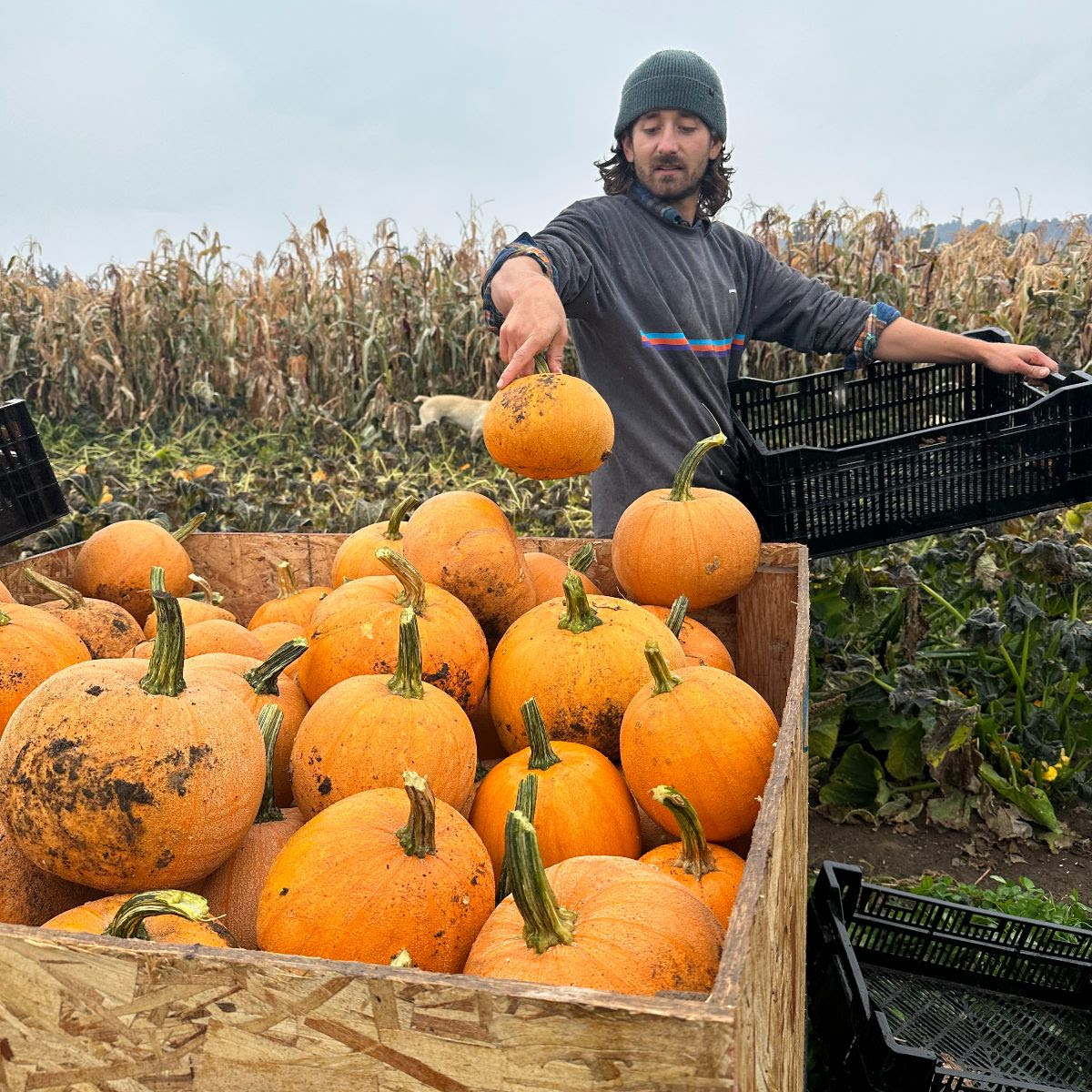
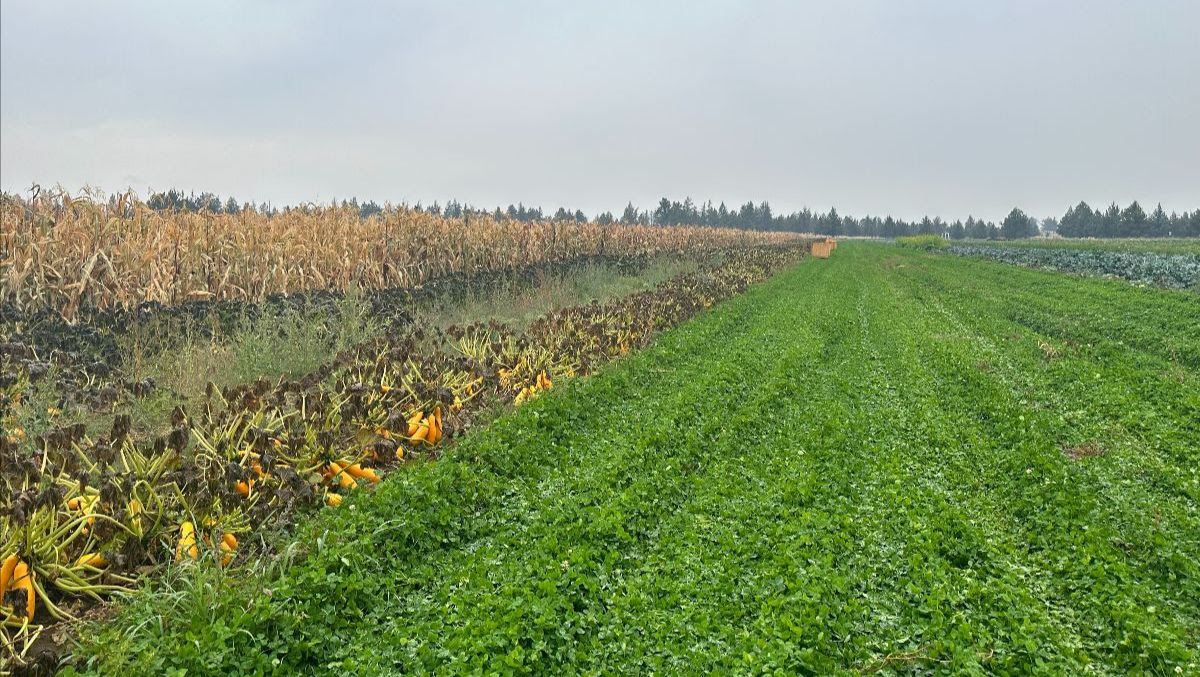
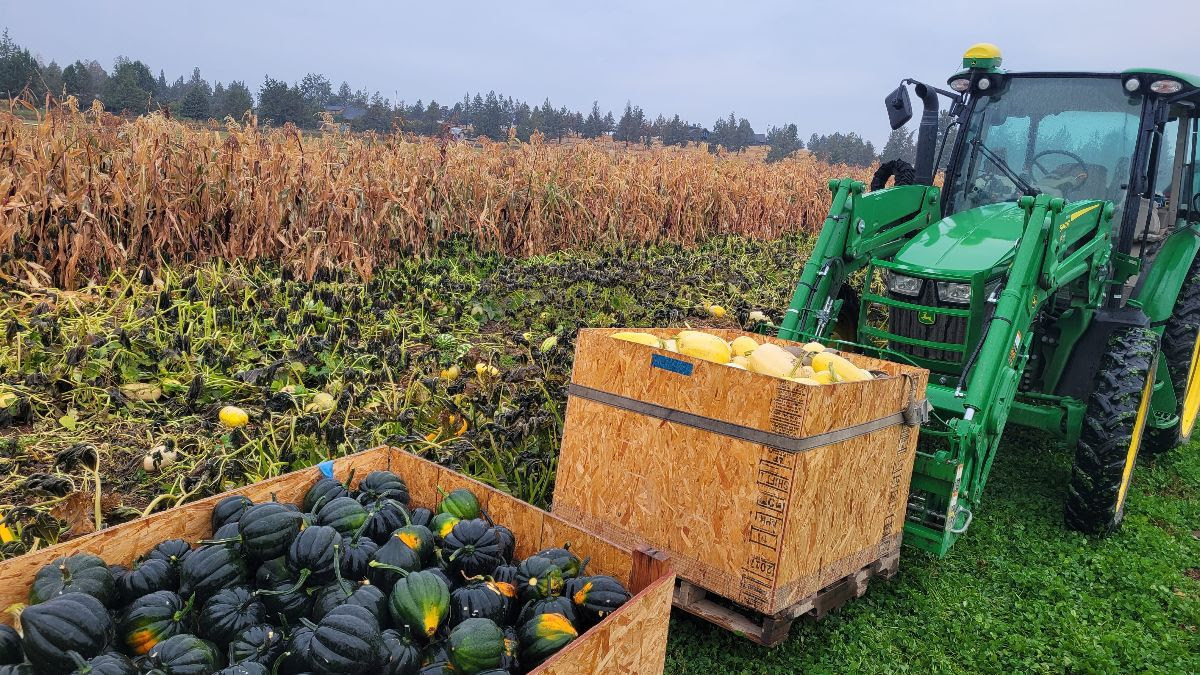
|
photo credit: Natalie Leder, Melissa Harmon, Sarahlee Lawrence
|
A whole season in the making! We direct seeded the winter squash on May 28 and harvested them this last week. 18 weeks from start to finish. After the first “hard” frost, we went out and picked them all by hand and separated them by type and when to eat and put them in their pallet boxes for the winter. ❦ Not everything is affected by the frost the same. We use it to our advantage when harvesting winter squash as you can see from the photo. The vines have shriveled back making it easier to find the squash below! ❦ After the pallets are loaded, we move them by tractor to the mill building where they will be stored and provide food all winter long for our Winter and Full Diet CSAs.
Save the date and mark your calendar: Customer Appreciation/Gleaning Day
Sunday, October 22, 11a-3p
Bring your family, friends, and selves.
Bring your shovels, buckets, gloves, and maybe your gardening clothes.
Please don’t bring your dogs! This is a no-dog event!
We will have finished harvesting all our storage crops and are opening the 25-acre field for 1-day of gleaning. Go treasure hunting, grab some small plates from the kitchen for lunch ($5-$10/option), take a farm tour, listen to some live music on the porch, and celebrate the end of the growing season and the arrival of winter.
We hope to see you there!
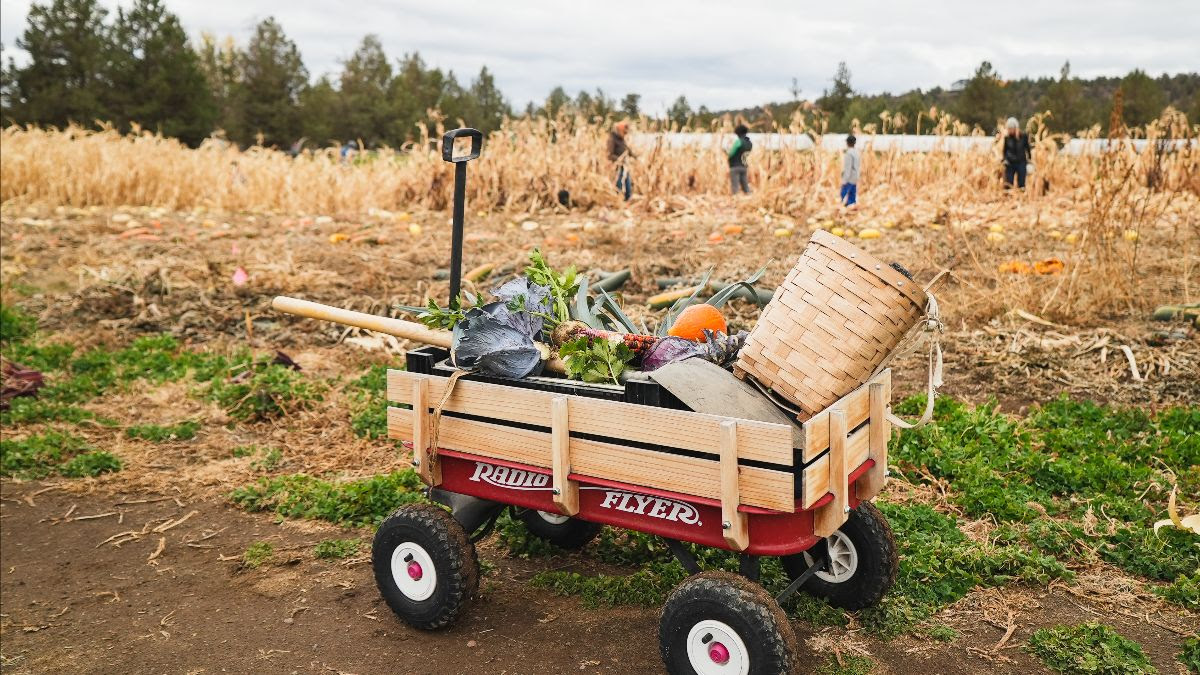
|
photo credit: 29NrTH
|
Here are some ways to set yourself up with local goods this off season!
Rainshadow Winter CSA
- monthly crate of seasonally available vegetables (including fresh greens!) from Rainshadow Organics and 10lbs of mixed meat (chickens, pork, beef, lard, broth)
- 7-months, 1st Thursday of the month, November-May with pick ups in Sisters, Bend, and at our Farm Store
- More information and sign ups HERE
Fill Your Pantry: Sunday, November 11
- This is a bulk buying farmers Market at the Deschutes County Fairgrounds where you can stock up on local products for the winter: meats, vegetables, flour, ferments, etc.
- We will be there along with many other Central Oregon farmers and producers.
- Set a reminder in your calendar for October 22 to get your pre-orders in. Many vendors sell out of supplies during the pre-order time.
- You can find more information HERE.
Early-Bird sign up special
Secure your 2024 Summer CSA today and enjoy our Early-Bird bonus
You and 1 guest are invited to a casual dinner and farm tour at Rainshadow: live music, small plates from the farm kitchen, a wander through the farm with your farmers. BYOB and chair/picnic blanket. Rainshadow will provide the rest. This will probably be June 6, but we will firm that up closer to.
Using SNAP benefits for your CSA? Sign up today using the Pay in Full option and secure your spot. I won’t send your SNAP/double up food bucks request in until April of 2024!

Subscription Prices
Meat Only Subscription
Vegetable Only Subscriptions
Meat & Vegetable Subscriptions
Pay today and don’t pay again until June 24, 2024.
Pay in Full Prices
Meat Only
Vegetable Only
Meat and Vegetable CSA
Veggie ID: Onions
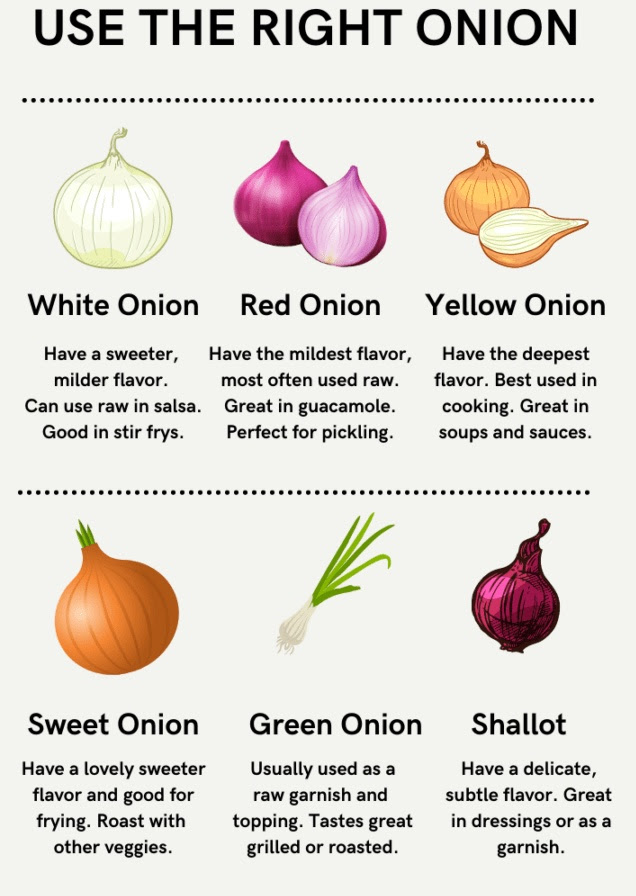
|
photo credit: thishealthytable.com
|
We grow all the types of onions here, but this week lets focus on the later season onions. These are white, yellow, and red and have much thicker skins and lower water content so they store longer. These are a foundation of our winter CSA and will be part of our last couple summer CSAs too!
Onions have been around FOREVER and while there are wild varieties almost everywhere (probably where we started acquiring our taste for them), the first record of onions being domesticated comes from Mesopotamia. We know that the ancient Egyptians valued onions both as food and currency–people who built the pyramids were partially paid in both onions and garlic–and from Egypt, onions made their way throughout the rest of Europe and found their way to the United States in the mid-1600s when they were planted in Massachusetts by the Pilgrims.
It is no wonder onions crossed the Atlantic, they are integral to most savory cooking! Raw onions can have a flavor that ranges from sweet to spicy to hot to mild. When cooked their flavor becomes much sweeter, mild, and rounded out. And onions are good for you to boot. Full of chromium, vitamins C and B6, dietary fiber, manganese, molybdenum, tryptophan, folate, and potassium.
Finally, a note on when to use what onion. While the image above has some rules about what onion to use when, I have found that if your recipe calls for shallots and you only have leeks, or it calls for a white onion and you only have shallots, just go ahead and use them. You can get caught in the weeds of the specifics of things, but at their base, most of the time an allium is an allium. Plus, when eating seasonally and locally, your recipe will reflect the flavor of the moment: what is ready right now. That is the most important part.
To store: This time of year you want to store onions in your fridge, but in another month, after they have seasoned a bit more, they are best stored on your counter or in a dark cool corner in your pantry. But be careful what you store onions next too! Onions release some gasses that will make potatoes spoil faster and apples, celery, and pears will absorb the flavor of the onions.
To prep: Trim 1/4 to 1/2 inch off both ends and peel off the first layer of tough papery skin. But keep your skins for use in making broth. They freeze well for this purpose.
To use: Onions are a great base for pretty much anything savory. Sauté them in the oil of your choice as the beginning of any sauce, soup, stew, stir-fry … the list goes on forever. Chop them up raw and put in salsas and salads or sprinkled judiciously on tacos and burritos.
To preserve for spring: At a certain point, storage onion season ends but we don’t want to stop using onions. I like to have a couple gallon bags of frozen onions at the ready, one diced and one sliced. Then, when I need onions I just pull them out by the handful and toss them into whatever I am cooking.
Serving Suggestions and Ideas from Mi Ae Lipe’s Bounty from the Box: The CSA Farm Cookbook
Complementary Herbs, Seasonings, and Foods
Apples, bacon, basil, beef, butter, cheese (blue, Cheddar, Gruyère, mozzarella, Parmesan), chiles, cinnamon, cloves, cream, cucumbers, garlic, liver, mushrooms, nutmeg, olives, olive oil, paprika, parsley, pepper, pork, poultry, raisins, red wine, rice, sesame, sherry, soy sauce, taco mix, thyme, tomatoes, vegetables, vinegar, Worcestershire sauce.
Serving Suggestions
- Try an unusual and tasty “coleslaw” made with thinly sliced red onion, fennel, and a tangy vinaigrette dressing.
- The French slow-simmer very thinly sliced onions in butter and red wine to create a confit that is tasty with beef, pork, and lamb dishes.
- Chopped onions add flavor to just about any vegetable or side dish you can imagine.
- Small halved red onions are absolutely delicious brushed with olive oil and cooked on the griddle, then finished with balsamic vinegar, and salt and freshly ground black pepper.
- Serve roasted onions with a warm bacon dressing or vinaigrette.
Vegetable CSA Harvest List
Every week, we include this section which includes what we think will be coming out of our fields and hoop houses for Wednesday pick up. Keep in mind, that we send this email on Sunday and we harvest Monday & Tuesday for our Wednesday CSA. Sometimes we are spot on, but other times, we discover that we have more of something else and substitute that.
Vegetable Options will probably include:
(This time of year it is really hard to know exactly what will be available. Bear with us!)
Apples/pears
Beets
Broccoli
Cabbage
Carrots
Fennel
Greens (could be Chard, Asian Greens, or kale)
Green onions
Herbs
hot peppers
Leeks
Napa cabbage
Potatoes
Salad mix
Summer squash & zucchini
sweet peppers
Tomatoes
Yod Fah
Watermelon
Meat CSA: Chicken and beef for all (and pork for Large Meat CSAs!)
Thanks for a wonderful Summer Meat CSA! Don’t forget to renew for next year!
Large CSA (10lbs)
- 1 whole roasting chicken
- 1 pack pork chops
- 1 pack bratwurst
- 1 pack bacon
- +/- 3 ground beef
Small CSA (5lbs)
- 1 whole roasting chicken
- +/- 2 ground beef
Recipe Corner
Every week I try to send along a few recipes that utilize the meats and vegetables in your CSA share. Check out the recipes below for some inspiration!
Winter Squash Kale Salad with Maple-Bourbon Dressing
(by Andrea Bemis, Dishing up the Dirt)
INGREDIENTS
ROASTED SQUASH
1 medium-sized winter squash (pumpkin, north georgia candy roaster, kabocha)
½ teaspoon ground cinnamon
½ teaspoon paprika
1/4 teaspoon cayenne pepper
½ teaspoon fine sea salt
2 tablespoons olive oil
MAPLE BOURBON VINAIGRETTE
1/4 cup bourbon
2½ tablespoons pure maple syrup
2½ tablespoons apple cider vinegar
1 teaspoon Dijon mustard
3 tablespoons extra-virgin olive oil
pinch of salt
SALAD
1/4 cup almonds
4 strips good-quality bacon
1 large bunch of kale, tough stems discarded, cut into bite-sized pieces (about 6 cups)
1/4 cup crumbled blue cheese, plus additional to taste
2 large Medjool dates, pitted and roughly chopped
fine sea salt and freshly ground black pepper
INSTRUCTIONS
- Roast the squash: Preheat the oven to 425°F and line a baking sheet with parchment. Peel the squash, scoop out the seeds, and cut it into 1/2-inch cubes. In a bowl, toss the squash with the spices and oil. Spread it on the baking sheet and roast until it is golden and tender, about 20 minutes. Flip the squash halfway through cooking.
- Make the dressing: In a small saucepan over medium heat, bring the bourbon to a boil. Reduce the heat to low and cook until it is reduced by half, about 2 minutes. Stir in the maple syrup and apple cider vinegar. Continue to cook the dressing over low heat for about 2 minutes longer. Remove it from the heat and whisk in the mustard, oil, and a pinch of salt.
Six-Onion Soup
(By Julia Rosso & Sheila Lukins, The Silver Palate Cookbook)
INGREDIENTS
4 tablespoons sweet butter
2 cups finely chopped yellow onions
4 large leeks, white parts only, well cleaned
2½ cup chopped shallots
4 to 6 garlic cloves, peeled and minced
4 cups Chicken Stock
1 teaspoon dried thyme
1 bay leaf
salt and freshly ground black pepper, to taste
1 cup heavy cream
3 scallions (green onions), trimmed, cleaned, and diagonally cut into ½-inch pieces
INSTRUCTIONS
- Melt the butter in a pot. Add the onions, leeks, shallots and garlic and cook, covered, over low heat until vegetables are tender and lightly colored, about 25 minutes.
- Add the stock, thyme and bay leaf, and season to taste with salt and pepper. Bring to a boil, reduce heat, and cook, partially covered, for 20 minutes.
- Pour the soup through a strainer set over a bowl, transfer the solids and 1 cup of the liquid to the bowl of a food processor fitted with a steel blade (or use a food mill fitted with the medium disc), and purée.
- Return the purée and remaining 3 cups of liquid to the pot and set over medium heat. Whisk in the heavy cream and bring to a simmer. Add the scallions and simmer for another 5 minutes, or until they are tender. Ladle into heated bowls.
Chicken in a Pot with Red Potatoes, Carrots, and Shallots
(By America’s Test Kitchen, The Complete Autumn and Winter Cookbook)
INGREDIENTS
1 whole chicken, divided
1 1/2 teaspoons salt, divided
1/2 teaspoon pepper
1 tablespoon oil
1 1/2 pounds red potatoes, unpeeled, cut into 1-inch pieces
1 pound carrots, peeled and cut into 1-inch pieces
4 shallots, peeled and halved
3 garlic cloves, minced
1 teaspoon minced fresh thyme or 1/4 teaspoon dried
1/2 cup dry white wine
1/2 cup chicken broth, plus extra as needed
1 bay leaf
2 tablespoons unsalted butter
1 tablespoon lemon juice
1 tablespoon minced fresh parsley
INSTRUCTIONS
- Adjust oven rack to lower-middle position and heat oven to 350 degrees. Pat chicken dry with paper towels, tuck wingtips behind back, and sprinkle with 1 teaspoon salt and pepper. Heat oil in Dutch oven over medium-high heat until just smoking. Place chicken, breast side down, in pot and cook until lightly browned, about 5 minutes. Carefully flip chicken breast side up and continue to cook until well browned on second side, 6 to 8 minutes; transfer to large plate.
- Pour off all but 1 tablespoon fat from pot. Add potatoes, carrots, shallots, and remaining ½ teaspoon salt and cook over medium heat until vegetables are just beginning to brown, 5 to 7 minutes. Stir in garlic and thyme and cook until fragrant, about 30 seconds. Add wine, broth, and bay leaf, scraping up any browned bits.
- Place chicken, breast side up, on top of vegetables, along with any accumulated juices. Transfer pot to oven and roast, uncovered, until breast registers 160 degrees and thighs register 175 degrees, 55 minutes to 1 hour 5 minutes, rotating pot halfway through roasting. Remove pot from oven. Transfer chicken to carving board, and let rest for 15 minutes. Using slotted spoon, transfer vegetables to serving platter and tent with aluminum foil to keep warm.
- Discard bay leaf. Pour liquid left in pot into fat separator and let settle for 5 minutes. (You should have ¾ cup defatted liquid; add extra broth as needed to equal ¾ cup.) Return defatted liquid to now-empty pot, bring to simmer over medium-high heat, and cook until it measures ½ cup, 5 to 7 minutes. Off heat, whisk in butter and lemon juice, and season with salt and pepper to taste. Sprinkle vegetables with parsley, carve chicken, and serve with sauce.
Two Versions of Marinated Leek Salad, so choose the one that fits your fridge/freezer/pantry situation!
Marinated Leek Salad with Wheat berries, carrots, and seared salmon
(by Abra Berens, Ruffage)
INGREDIENTS
3/4 cup olive oil, plus more for toasting wheat berries
1 cup wheat berries
4 cups water or stock
Salt
1 orange, zest and juice
1 Tbsp apple cider vinegar
2 medium leeks, trimmed and cut into 1- to 2-inch- long thin strips or half-moons and cleaned well
4 salmon fillets or 1 full side
4 carrots, shaved into ribbons with a vegetable peeler
½ bunch parsley, roughly chopped
INSTRUCTIONS
- Heat a glug of olive oil in a medium saucepan. When hot, add the wheat berries and toast until fragrant and lightly toasty. Add the water and 2 big pinches of salt, bring to a boil, reduce to a simmer, and cook until the wheat berries are tender, about 45 minutes.
- Combine the orange zest, juice, vinegar, olive oil, and a big pinch of salt and marinate the leeks.
- Pat the skin of the salmon dry, sprinkle both sides liberally with salt, and sear.
- While the salmon sears, combine the leek mixture with the carrots and parsley. Taste and adjust the seasoning and acidity.
- Spread the wheat berries on a serving platter. Top with the fish and garnish with the salad.
Marinated Leek Salad with Radish Slaw and Pork Chops
(by Abra Berens, Ruffage)
INGREDIENTS
2 leeks cut into slices and cleaned well
handful of small or 1 large daikon radish, shaved
½ bunch parsley, roughly chopped
½ cup apple cider vinaigrette
pork chops or blade steak
Salt and freshly ground black pepper
INSTRUCTIONS
Combine the leeks, radishes, and parsley with the vinaigrette. Season the pork chops/blade steak liberally with salt and pepper and sear in a large frying pan until cooked through, about 7 minutes each side. Allow the chops to rest for 7 minutes, and then top with the slaw or place alongside and serve.
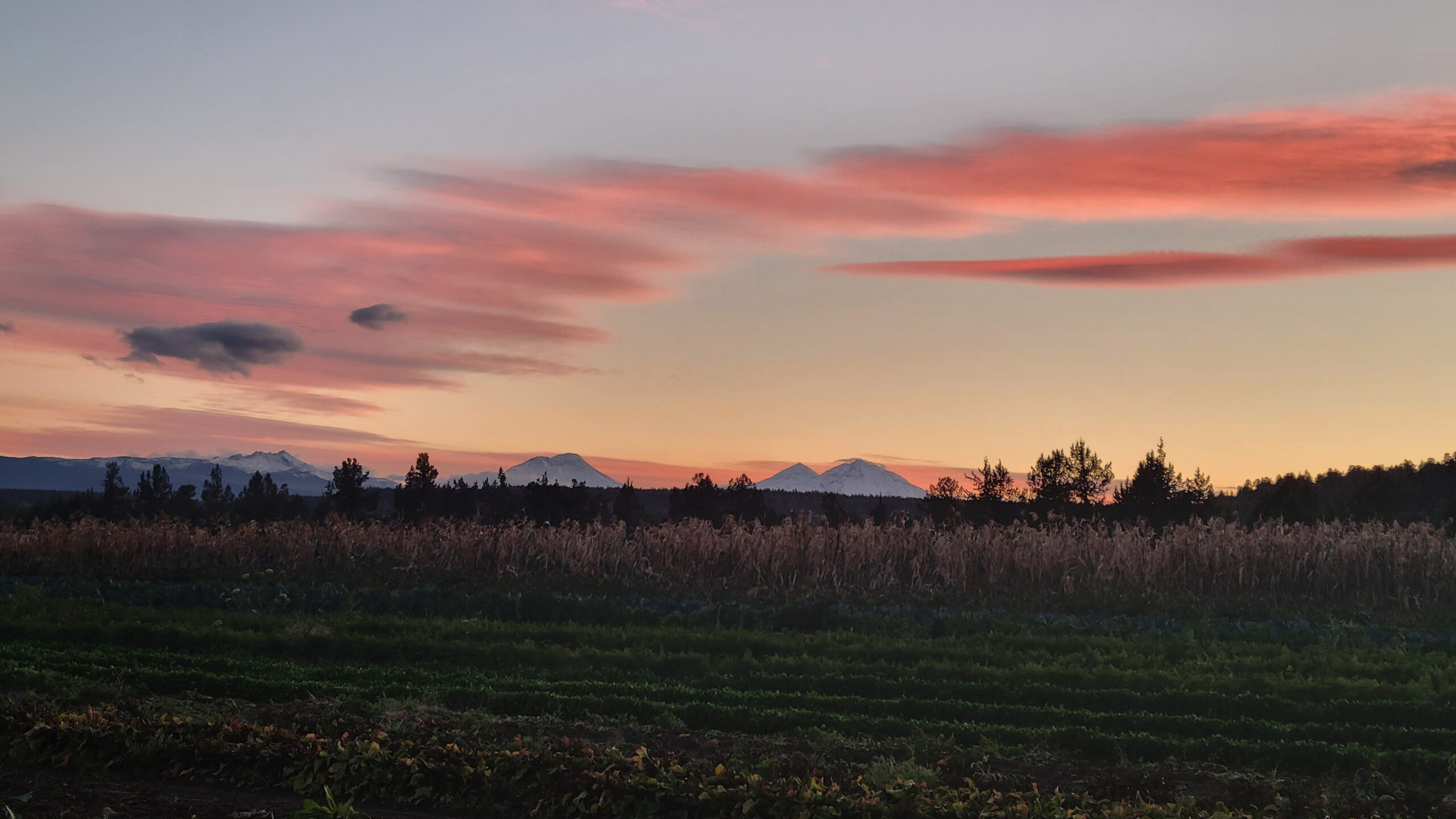
|
photo credit: Sarahlee Lawrence
|
See you on Wednesday, October 4!
The Farm Crew


